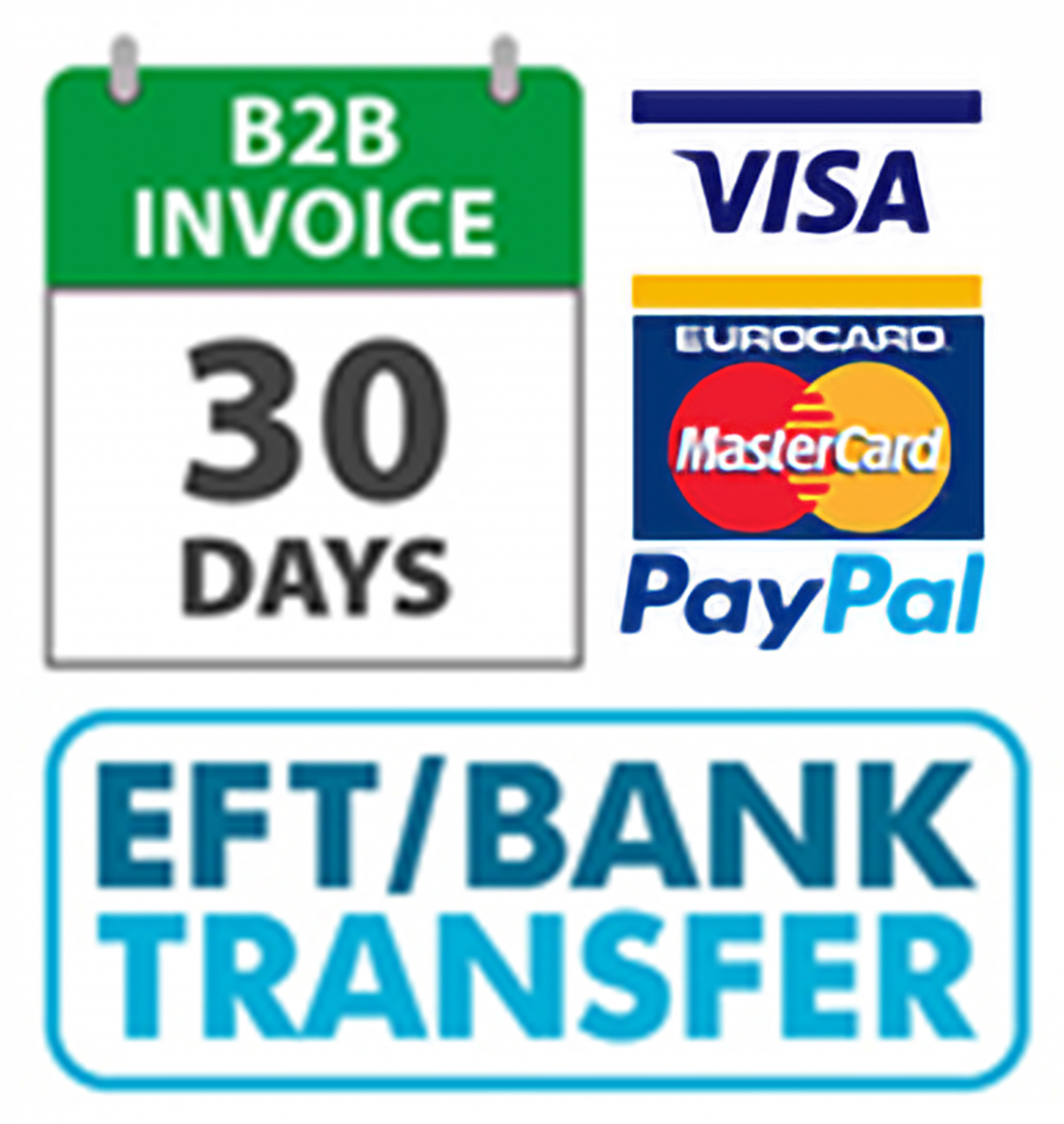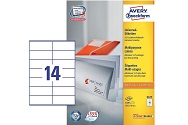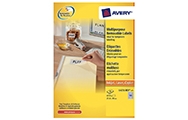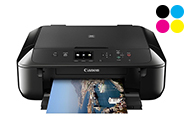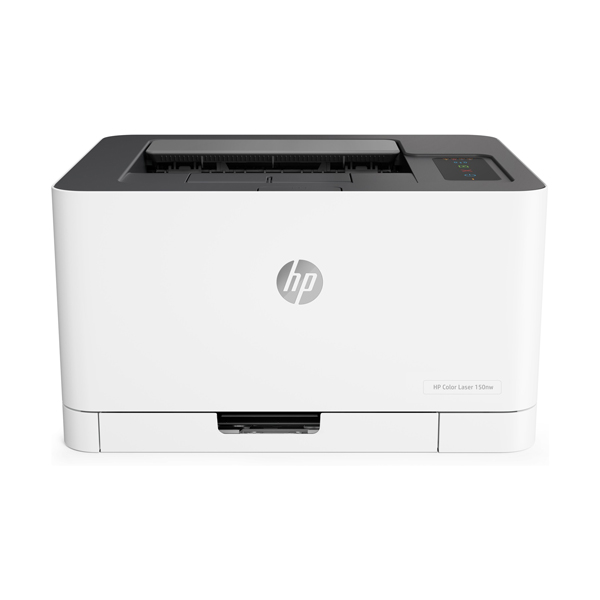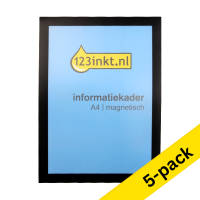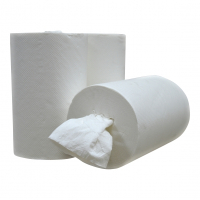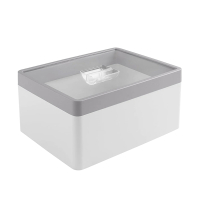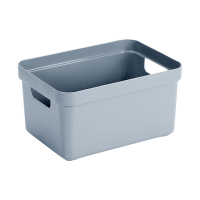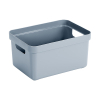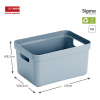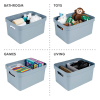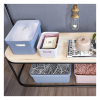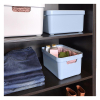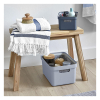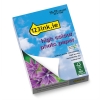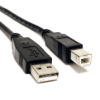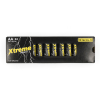- Over 400,000 clients!
- Nationwide delivery from €4.99 (max €6.99)
This site is protected by reCAPTCHA and the Google
Privacy Policy and
Terms of Service apply.
Food labels for the catering industry
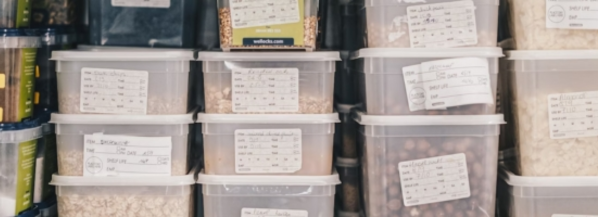
You’ve likely experienced an unexpected surge in orders before. The kitchen is already running at full capacity, and now it needs to step up its game. In the rush, it becomes harder to keep track of expiration dates. That mozzarella in the fridge—how long will it last?With every item, there’s doubt, and the task feels impossible. Meanwhile, the orders won’t stop coming. The result is a chaotic kitchen, overwhelmed staff and impatient guests. Clear food labels can help bring back structure and efficiency, helping your team stay on top of it all.
In this article, we share the best tips and tricks for using and creating your own food stickers. Learn how smart food labels can transform the way you organise your kitchen pantry.
Before explaining how to label food and what you need to do, we’ll first explain what food safety means.
Working safely with food means taking measurements to prevent food from being contaminated with harmful bacteria or viruses. By adhering to these guidelines, you can prevent food poisoning and protect the health of your customers. Important aspects of food safety in the hospitality industry include:
Besides protecting your customers, your reputation also plays a role. People enjoy dining at establishments with good reviews. They expect the food to be delicious and safe. If a customer becomes ill after visiting your establishment, it can impact your business’s reputation. It can lead to negative reviews, poor word-of-mouth and even a drop in revenue.
Labelling your food products instantly improves safety, hygiene, and efficiency in the kitchen. On top of that, it helps you deliver a superior dining experience for your guests. What more could a restaurant owner want?
Whenever you store an item in your pantry, give it a day label. For example, if you put an ingredient in your refrigerator on Wednesday, give it a red label.
The colours help you manage food inventory and shelf life. It’s a simple, visual aid that your kitchen staff can easily follow. Do you prefer to use other colours? Don’t worry, this colour scheme isn’t a standard or legally binding rule. The most important thing is to be consistent in your use of colours or symbols. That’s the only way to reap the full benefits of clear food labels.
Smart food service entrepreneurs use handy printable freezer labels. With your printer, you can create these stickers with all the important food information. You will, of course, need a printer. We have a wide range of different inkjet and laser printers in stock. Not sure which model you need? With our handy printer comparison tool, you can quickly find the perfect printer.
Regular printable and writable labels are also an excellent choice for labelling your food. These cannot withstand extremely low temperatures, but they stick very well to all kinds of boxes, containers and bags.
Make your kitchen even more organised by also placing labels on the shelves and pantries. This allows your kitchen staff to immediately find the right ingredients, significantly reducing the preparation time of dishes.
Now that you know the shelf life of the most common ingredients, we can look at the other label information.
Add this information to all your food labels, and everyone in the kitchen will know exactly where to find the right instructions. You’ll notice your kitchen becomes a well-oiled machine, and you’ll even reduce food waste.
Apply these tips to turn your kitchen into a safe, organised space!
Do you have any questions or can we help you in any way? Contact our Customer Service team! They’re always happy to help.
In this article, we share the best tips and tricks for using and creating your own food stickers. Learn how smart food labels can transform the way you organise your kitchen pantry.
Working safely in catering establishments with food labels
Food safety is crucial for every hospitality business. The first step you can take is labelling all your ingredients with food labels. This is one of the rules that fall under the HACCP food safety system. HACCP is legally established in Europe and applies to all businesses in the hospitality industry.Before explaining how to label food and what you need to do, we’ll first explain what food safety means.
Working safely with food means taking measurements to prevent food from being contaminated with harmful bacteria or viruses. By adhering to these guidelines, you can prevent food poisoning and protect the health of your customers. Important aspects of food safety in the hospitality industry include:
- Good hygiene: Wash your hands regularly, wear clean clothes and keep the work area tidy and utensils clean.
- Temperature control: Freezing, cooling and heating food at the correct temperature to prevent spoilage and the growth of harmful bacteria
- Cross-contamination: Prevent the transfer of harmful microorganisms between different ingredients and dishes. Always use clean knives and chopping boards and wash your hands thoroughly. This is also crucial for guests with allergies, such as celiac disease or lactose intolerance.
- Food safety knowledge: Catering staff and entrepreneurs must be aware of all rules and procedures regarding food safety.
Besides protecting your customers, your reputation also plays a role. People enjoy dining at establishments with good reviews. They expect the food to be delicious and safe. If a customer becomes ill after visiting your establishment, it can impact your business’s reputation. It can lead to negative reviews, poor word-of-mouth and even a drop in revenue.
How to work safely with food stickers
Working safely with all types of food requires discipline and awareness from all employees. To help yourself and your staff, you can easily label your food. Here are the various benefits:- Easily check stock
- Combating food waste
- Prevent cross-contamination
- Save time
- Organised pantries
- Improve workflow
- Save money
Labelling your food products instantly improves safety, hygiene, and efficiency in the kitchen. On top of that, it helps you deliver a superior dining experience for your guests. What more could a restaurant owner want?
The usefulness of food labels in different colours
In the hospitality industry, it’s common to use the same color system for food labels. This makes it easy to identify the day each item was prepared at a glance. It’s especially helpful in kitchens with staff from diverse language backgrounds. The colour scheme for each day of the week is as follows:- Monday: blue
- Tuesday: yellow
- Wednesday: red
- Thursday: brown
- Friday: green
- Saturday: orange
- Sunday: black and white
Whenever you store an item in your pantry, give it a day label. For example, if you put an ingredient in your refrigerator on Wednesday, give it a red label.
The colours help you manage food inventory and shelf life. It’s a simple, visual aid that your kitchen staff can easily follow. Do you prefer to use other colours? Don’t worry, this colour scheme isn’t a standard or legally binding rule. The most important thing is to be consistent in your use of colours or symbols. That’s the only way to reap the full benefits of clear food labels.

TIP!
Is someone in your kitchen colour blind? All of those different colours can end up being confusing. Make sure your stickers display the days of the week also. This prevents misunderstandings, allows your staff to remain productive, and contributes to an inclusive and accessible work environment.
Is someone in your kitchen colour blind? All of those different colours can end up being confusing. Make sure your stickers display the days of the week also. This prevents misunderstandings, allows your staff to remain productive, and contributes to an inclusive and accessible work environment.
All food label supplies
You now know why food labelling is so important in the hospitality industry, what information the stickers should contain, and how colour coding works. Now we’ll outline the necessary materials. All you need are sticker sheets, markers and/or a printer.Sticker sheets to make food labels
Freezer labels are specially designed for use in a freezer. These labels are also perfect for the refrigerator. They are resistant to low temperatures, so they stick perfectly to your food containers, freezer boxes and bags in cold conditions. Write all the necessary information on your labels with a permanent marker. Use markers in different colours to use the standard colour coding or your own.Smart food service entrepreneurs use handy printable freezer labels. With your printer, you can create these stickers with all the important food information. You will, of course, need a printer. We have a wide range of different inkjet and laser printers in stock. Not sure which model you need? With our handy printer comparison tool, you can quickly find the perfect printer.
Regular printable and writable labels are also an excellent choice for labelling your food. These cannot withstand extremely low temperatures, but they stick very well to all kinds of boxes, containers and bags.
Make your kitchen even more organised by also placing labels on the shelves and pantries. This allows your kitchen staff to immediately find the right ingredients, significantly reducing the preparation time of dishes.

TIP!
You can easily remove your old labels with a cleaning spray. This product leaves no sticker residue behind, so your kitchen always looks neat!
You can easily remove your old labels with a cleaning spray. This product leaves no sticker residue behind, so your kitchen always looks neat!
Shelf life of food
The expiration date for an ingredient must be included on every food label to reduce food waste and ensure food safety. This table highlights 10 common ingredients, along with their storage conditions and shelf life.| Ingredient | Storage conditions | Shelf life |
| Fish (e.g. salmon, cod, tuna) | Refrigerator (4°C) | 1-2 days |
| Salads, sauces and soups | Refrigerator (4°C) | 1-2 days |
| Meat (e.g. beef, pork, chicken) | Refrigerator (4°C) | 1-3 days |
| Fresh vegetables (including lettuce, cucumber, tomato) | Refrigerator (4°C) | 2-7 days |
| Fruit (e.g. apples, bananas, strawberries) | Refrigerator (4°C) | 2-7 days |
| Dairy products (e.g. milk, yogurt, cheese) | Refrigerator (4°C) | 3-7 days |
| Bread | Refrigerator (4°C) | 3-7 days |
| Eggs | Refrigerator (4°C) | 21-28 days |
| Pasta | Keep in a cool, dry place | 12-18 months |
| Rice | Keep in a cool, dry place | 12-18 months |
| Legumes (e.g. chickpeas, beans, lentils) | Keep in a cool, dry place | 12-18 months |
Now that you know the shelf life of the most common ingredients, we can look at the other label information.
Checklist: The most important information on your food labels
The colours and days of the week form the basis of your food day labels. Keep the checklist below handy when creating new labels:- Day of the week: Put the days of the week on each label.
- Monday → gone on Wednesday
- Tuesday → gone on Thursday
- Wednesday → gone on Friday
- Thursday → gone on Saturday
- Friday → gone on Sunday
- Saturday → gone on Monday
- Sunday → gone on Tuesday
- Processing date: Add the date the ingredient needs to be processed. For fresh products with a short shelf life and dishes that spoil quickly, this is usually 2 days after the date indicated.
- Product name: Write the ingredient in large letters on the label.
- Date and time: Note the date and time you stored the product. This information will help you determine its shelf life.
- Best before: Indicate the expiration date (or best-before date). This can be used instead of the processing date (see number 2 on this checklist). You can see at a glance whether the ingredient is still good for use or can be thrown into the bin.
- Storage advice: Write down where you should store the ingredient, such as the refrigerator, freezer or dryer.
- In/Out of Freezer: Note when your product was put in the freezer and when you took it out.
- Preparation instructions: If necessary, write down any useful information about how to prepare the product.
Add this information to all your food labels, and everyone in the kitchen will know exactly where to find the right instructions. You’ll notice your kitchen becomes a well-oiled machine, and you’ll even reduce food waste.
Create food labels
Our label specifications include handy templates. Download one, open it with Microsoft Word, and then easily design your own stickers. The templates have helpful dotted lines, which serve as the outline of the labels. This way, you know exactly how much information fits on each label.Design labels for food
Working with colours is incredibly useful, so the first step is to give your labels a background colour. Follow these steps:- Download your desired label template
- Open the template in Microsoft Word
- Click on one of the labels
- Under Home, go to Paragraph, click the paint bucket icon and choose a background colour
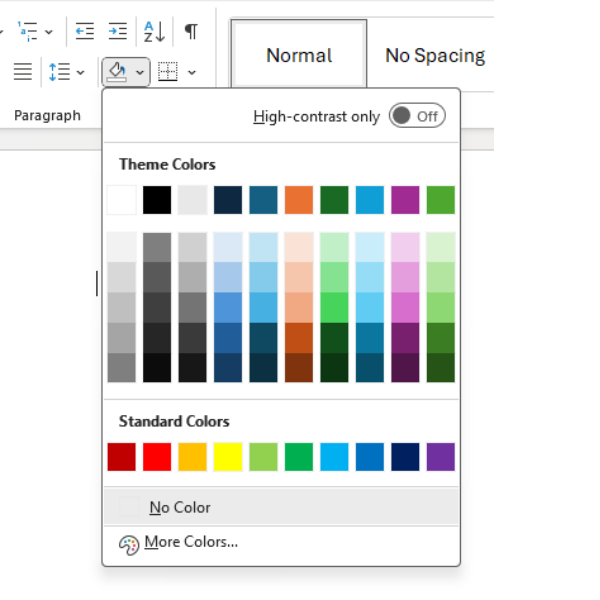
- Then give each food label its own colour
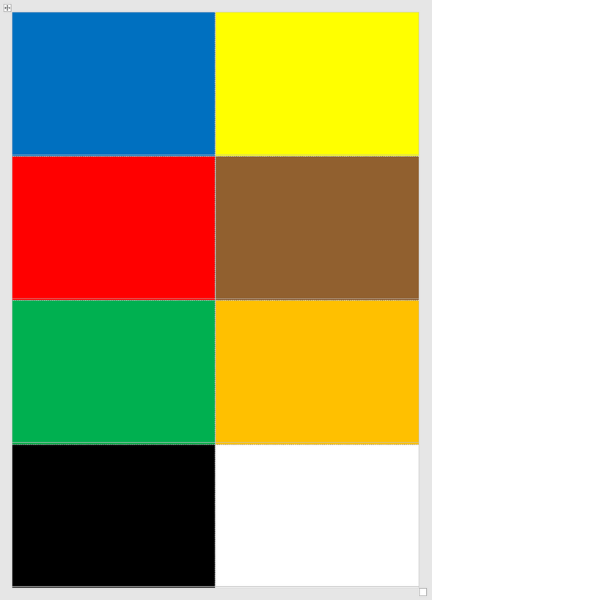
- Under Home, go to Font and choose a text colour, for example white or black
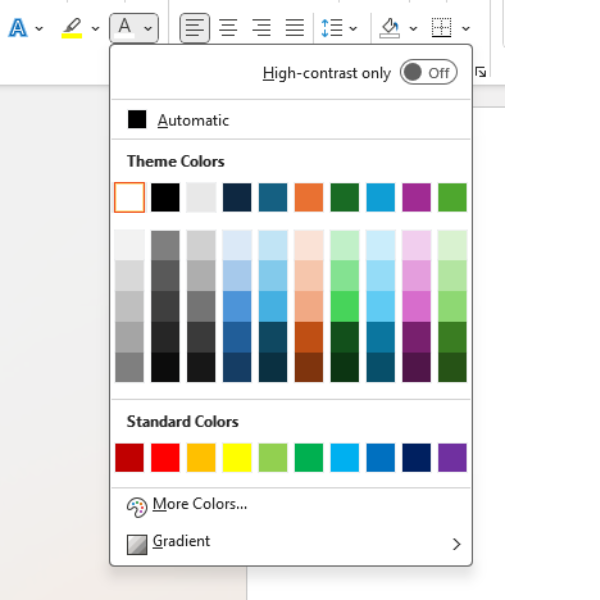
- Add any information you consider important
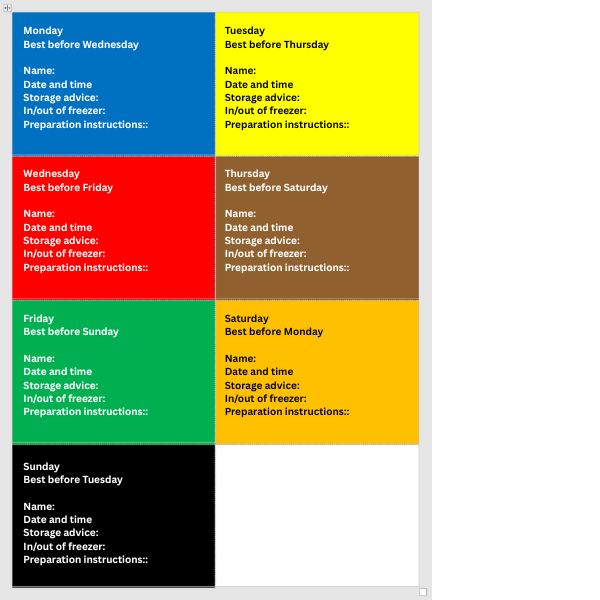
Common Questions
Can I design my own food stickers?
Yes, this is very easy with a sticker template and Microsoft Word. In this article, we’ll explain step-by-step how to create your own food labels. Sticker templates can be found in the specifications for labels on 123ink.ie.
Do food labels help reduce food waste?
Absolutely! By displaying expiration dates and storage recommendations on food labels, food service staff can better store ingredients and use them on time. Purchase freezer labels for your food containers at 123ink.ie.
Are there any colour schemes or symbols I should use on food labels for the hospitality industry?
You can choose your own colour scheme or symbols, but many restaurants and bars may use the following:
- Monday: blue
- Tuesday: yellow
- Wednesday: red
- Thursday: brown
- Friday: green
- Saturday: orange
- Sunday: black and white
Apply these tips to turn your kitchen into a safe, organised space!
| 123ink black A4 magnetic information frame (5-pack) | ||
|
|
||
|
€36.50
€29.67 Excl. 23% VAT
|
EU warehouse
|
|
| 123ink 1-ply towel roll suitable for Tork M1 dispenser, 18cm x 120m (12-pack) | ||
|
|
||
| Order now, we can ship this today! | ||
|
€42.50
€34.55 Excl. 23% VAT
|
In stock
|
|
| Sunware Sigma Home white/grey storage container, 3.3 litres | ||
|
|
||
| Order now, we can ship this today! | ||
|
€18.50
€15.04 Excl. 23% VAT
|
In stock
|
|






